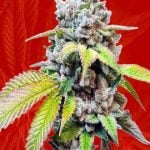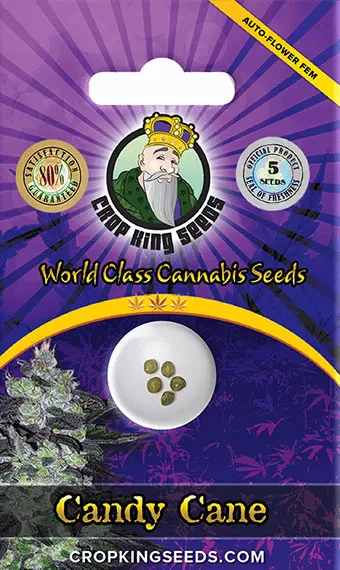When you are in the marijuana industry for quite some time, you’ve probably heard the benefits of CBD medically. CBD or also known as cannabidiol is the second active compound found in high CBD seeds of marijuana. They contain anti-inflammatory, anxiolytic, and analgesic properties that are great for people seeking medical help.
CBD can help treat a myriad of illnesses, from insomnia, anxiety, to alleviating nausea and treating muscle spasms. CBD oils are quickly gaining popularity for their benefits. They are known to be a great alternative option for people treating various ailments; they can also serve as supplements with an abundance of health benefits.
Still, there’s plenty of retailers selling CBD Oils in the market today, but it can be hard to know which one is pure or which one has lots of impurities. To cut the story short, you want to avoid these types of things; by doing so, you want to create your very own in the comforts of your own home.
Lucky for you, we’ve listed a complete tutorial on how to make CBD oil at home! Here are some of the guidelines you need to know. Before we dive into making CBD oil, it is important to learn a few things about CBD Oil and what it does entirely.
What is CBD Oil? How does it work?
CBD is one of the two most active compounds found in marijuana plants aside from THC. Although THC is known to produce the “stoney” and “high” sensation, the CBD is known to provide some therapeutic benefits to its users.
CBD has the ability to attach itself with other body receptors to provide and restore your body’s finest level of functionality. CBD oil, on the other hand, goes through different kinds of extraction to be used appropriately in its purest form.
People seek CBD oil to manage their pain, induce sleep and appetite, anxiety, depression, and a lot more. The CBD works by influencing other bodily functions to function well when CBD is activated by the endocannabinoid system. All types of bodily functions, you name it, CBD will have a piece of it.
This ability to bind with other receptors makes it beneficial for people wanting an alternative medication for different health matters. Plus, these benefits are well-backed by more and more scientific studies.
What makes CBD Oil different?
As we’ve mentioned earlier, they have tons of uses. Not only that, but they are also pretty easy to use and make. Also, CBD oils provide all the necessary essential oils your body is missing. This can include vitamins, flavonoids, fatty acids, and a whole lot more.
CBD oil doesn’t have THC in them, meaning you won’t fear getting high while receiving its therapeutic healing powers. They aren’t psychoactive and are a perfect choice for any time of the day.
How to Make CBD Oil at Home
Now that you have understood what CBD and CBD oils do to our body, it’s about time we teach you how to make CBD Oil.
Oil Method
We highly recommend doing the Oil method when you plan to make oil in your home; it is proven the safest and easiest one to do, especially if you are a beginner. With this method, the only thing you need to prepare is your carrier oil; if you don’t have any, olive oil or butter will do! This method is also popular and gives an efficient extract without any unwanted impurities.
Before you start, it is important that your marijuana is with the highest CBD available. As you may know, there are many cannabis strains that contain different CBD levels; it is ideal to choose the marijuana strain that have the highest level to be more effective and efficient in your extraction. Here are the steps:
Step 1: Prepare everything and Decarboxylate.
Before you start, grab your marijuana plant and carefully strip off all its leaves, buds, and stems. It is pretty important to start the decarboxylation process, meaning you have to heat the leaves, stems, and buds in a certain amount of temperature to activate its compounds. In simpler terms, you heat every leaf, stem, and buds at your disposal around 220 F for around an hour and a half. Technically, it is like baking your leaves within a specified amount of time to activate the plant’s chemicals.
Step 2: Mix your baked weed with your chosen oil.
Once the baking is done, provide a jar. You will have to put your mixed weed and your selected oil in a container, ensuring that the weed mix is soaked entirely with your oil. You can adjust the quantity you put in your jar; it depends on how potent you want your oil to be. This stage is called the saturation process.
Step 3: Seal the jar containing your weed-oil mixture tightly.
Once the soaking is done, it is the perfect time to boil the mixture. Remember to tightly secure the lid to avoid steam and water from entering the jar. This will prepare the jar for boiling.
Step 4: Boil your weed-oil mixture.
At the bottom of the pot, put a towel before putting down your jar; this will prevent your jar from sticking to the pot. Place your jar containing the mixture on top of the towel, and slowly fill the pot with hot water until it reaches a minimum of 200 degrees. We recommend having a thermometer to verify the readings.
Step 5: Heat for 3 hours
Once the heating takes place, always check your pot, and ensure that the water hasn’t entirely evaporated. After that, slowly turn off the stove and let it rest, and simmer for 3 hours. After that, another three hours.
Step 6: Heat again!
After this is done, we highly recommend heating the mixture again to truly eliminate all unwanted impurities. Once done, turn the heat off and let it rest through the night.
Step 7: It is good to go!
When you wake up, your finished product is ready for use! Proceed by filtering the mixture through the filter cloth and store it in a cool and dry place. Congratulations on your CBD Oil!
Conclusion
As long as you follow all the procedures, you are good to go! Making your very own CBD oil is a very rewarding thing to do. Not only does it provide therapeutic benefits, but by making one, you helped yourself avoid too many expenses.
Lastly, the quality of your CBD oil highly depends on the quality of marijuana you bought and the overall determinant of how effective your product is. If there are chances that your product won’t live up to your hopes, there are always alternative choices like buying through a trusted CBD oil brand!



















2 Responses
I have some questions about Decarboxylation:
You mention above that this should be done at 220 degrees F for 1 1/2 hours.
Questions: 1) Does it depend on the strain?
2) What is the tolerance on the temperature +/- ?
3) Is there a standard graph showing temperature vs time?
The reason I am asking these questions is because on line there are many different scenarios and I have no idea which is best.
Thanks
Like!! Great article post.Really thank you! Really Cool.